남계서원 南溪書院 Namgyeseowon
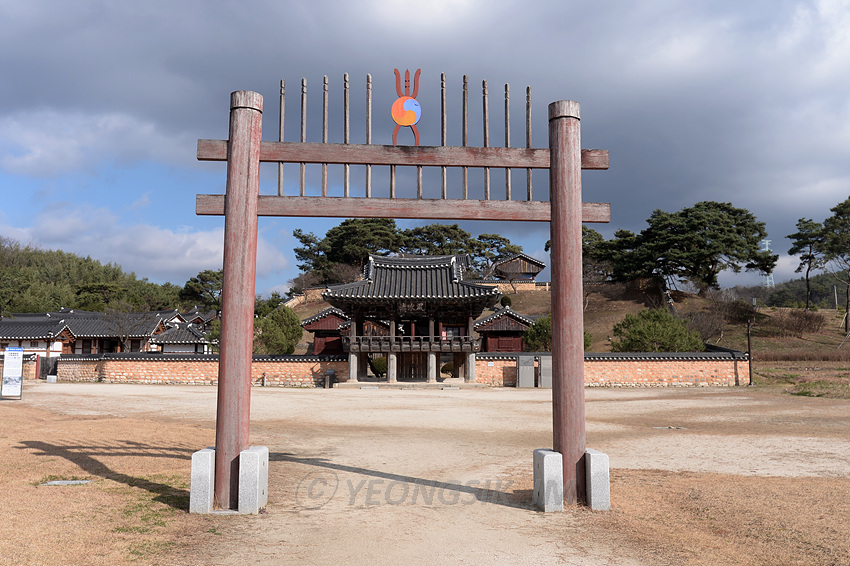
2019년 유네스코 세계문화유산 등재, 사적 제499호 Historic Site No.499
경남 함양군 수동면 원평리
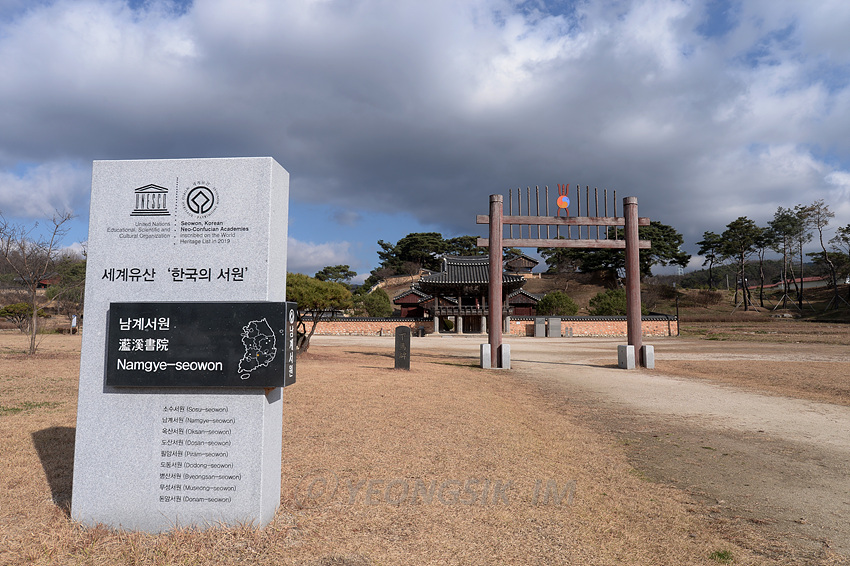
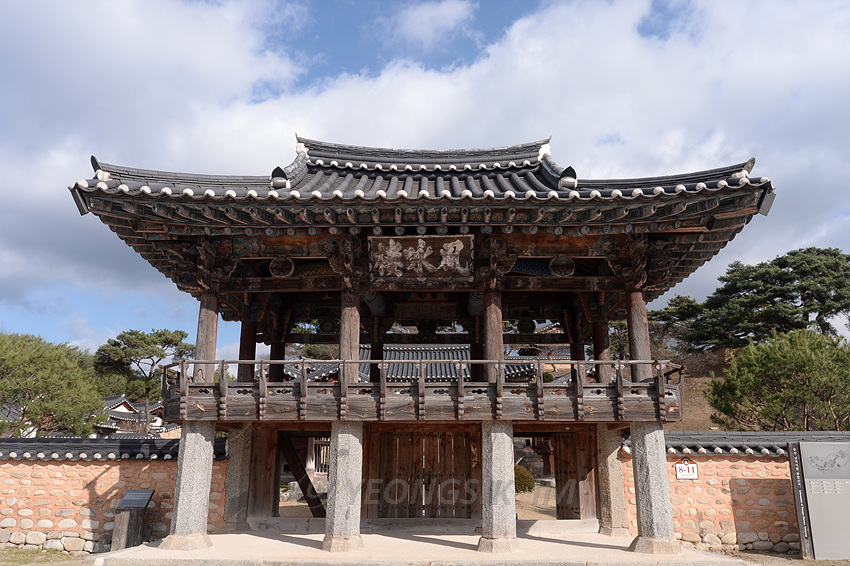
풍영루 Pungyeongnu Pavilion
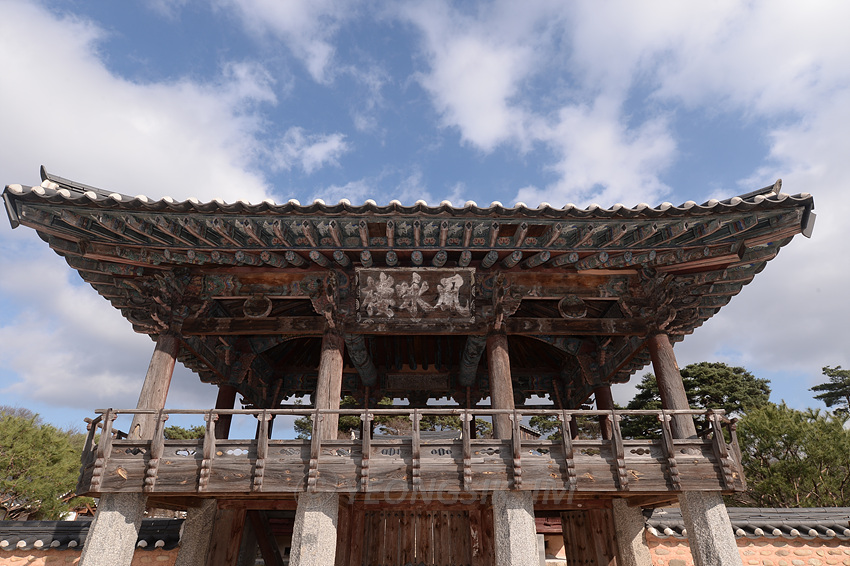
풍영루는 유생들이 공부를 하거나 손님이 오면 학문을 토론하고 정담을 나누기도 한 누각으로, 창건 당시 준도문이라고 하는 출입 삼문이었으나 후에 다락집을 올려 현재에 이르고 있다. 논어의 내용 중 '기수에서 목욕하고 무우에서 바람을 쏘이고 노래하며 돌아오겠다.’ 라는 중점의 뜻을 바로 여기서 느낄 수 있다하여 풍영루라 이름 지었다. “기수”와 “무우”는 춘추시대의 전설 속에 나오는 곳이다. 출입은 사당의 내삼문과 함께 동쪽으로 들어가고 서쪽으로 나가는 형태로 기문은 정여창 선생의 후손인 조선 말기 문장가 오담 정환필이 지었다.
Originally built as a gate of triple passages called Jundomun and later added a raised, wooden floor hall, Pungyeongnu Pavilion was used for student gatherings for various purposes, academic discussions or relaxation. The name of the gate pavilion is conceived from a passage in Analects of Confiicius where Zheng Dian said that he ”would wash in the Yi enjoy the breeze among the rain altars, and return home singing. The gate pavilion is designed, along with the Inner Triple Gate of the main shrine hall, to guide visitors to enter the shrine academy through the eastern passage and leave it through the western passage. The record of the background was written by Jeong Hwan-pil (a.k.a. Odam), a descendant of Jeong Yeo-chang and a renowned man of letters of late Joseon.
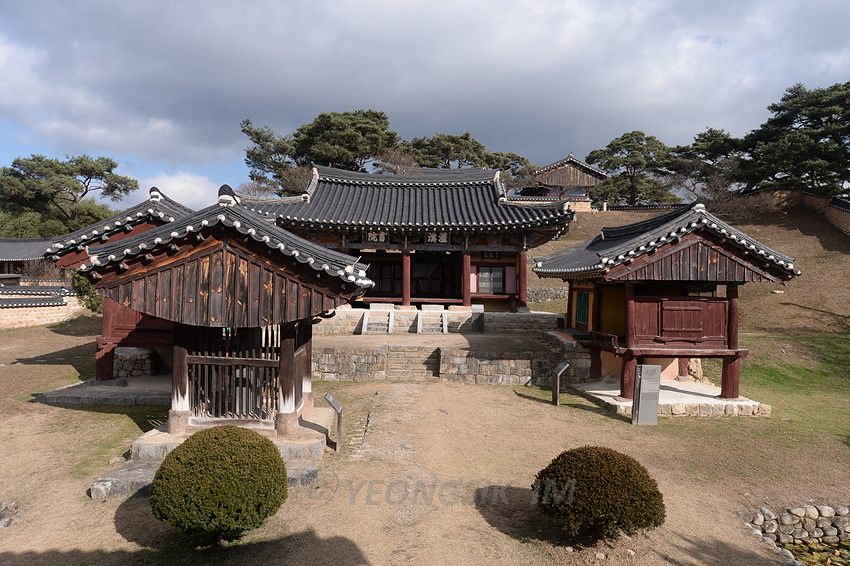
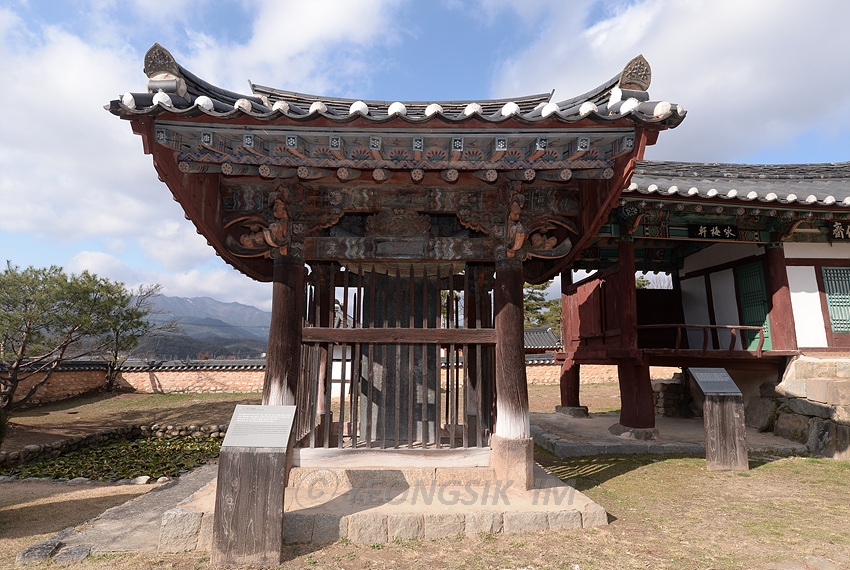
묘정비 Myojeong Monument
남계서원에 일두 정여창,동계 정온,개암 강익 선생 세 분을 코비고 향사를 ’올리고 있음에도 이를 찬양하는 송덕비가 없어 안타까워하다가 남계서원 건립 200여 년이 지난 1779년에 묘정비를 세우면서 글을 새겼다. 비문은 조선 후기 정조 때 문관 김종후가 지었다.
Namgyeseowon is dedicated to three Neo-Confucian scholars, Jeong Yeo-chang, Jeong On, and Gang and local Confucian followers have held seasonal memorial rites to honor their
li fe and achievement. Wliile this institution has a comparatively longhisiory; it had a monument commemorating the scholars only in 1779, some 200 years after its establishment. The epitaph was written by Kim Jong-hu, a civil minister of late Joseon when it was under the rule of King Jeongjo (1776-1800)
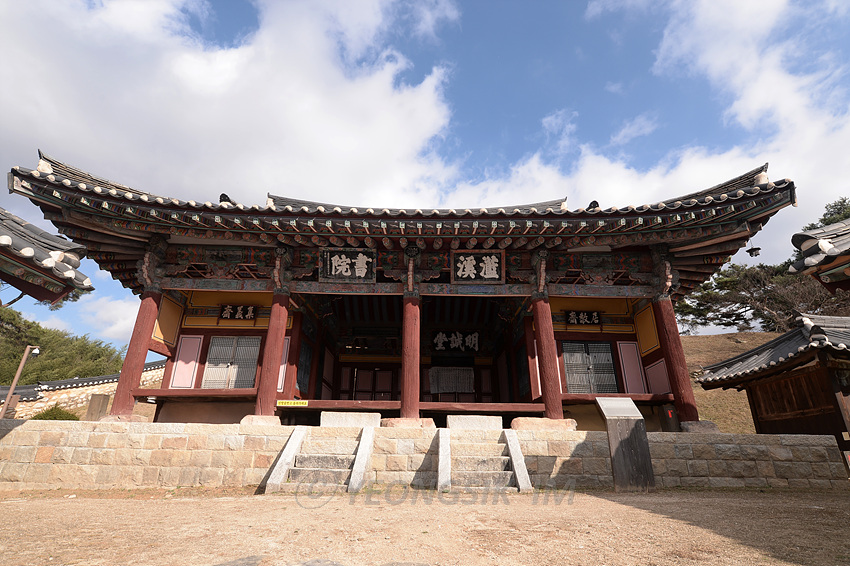
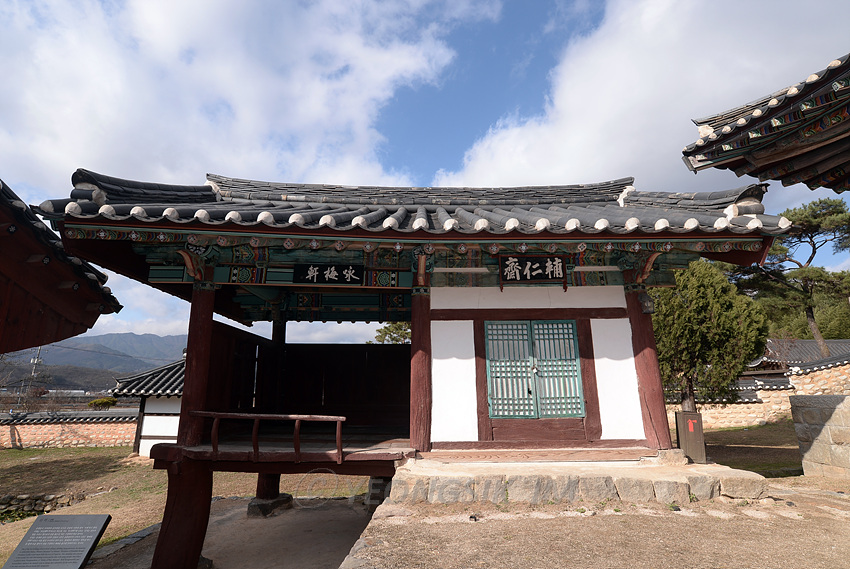
서재 Western dormitory
유생들이 거처하며 공부하던 곳으로 강당의 서쪽에 있어 서재라고 한다 서재는 보인재라고도 하는데,이는 “논어에 나오는 ‘군자는 4로서 벗을 사귀고 벗으로서 인을 돕는다.’라는 구절에서 따온 말이다.
서재는 동재와 같은 2칸의 건물로 1칸은 온돌방이며 나머지 1칸은 ‘영매헌이라고 이름 붙인 누마루로 되어 있다. 영매헌과 애련헌은 '연못을 파고 못 옆에 둑을 쌓아서 연을 구경하고 매화를 읊조릴 만하다’라는 뜻이다.
One of the two buildings used to house students attending Namgyeseowon, this dormitory is called either Seojae (”Western Dormitory”) or Boinjae (”Domiitory of Friendship through
Goodnessn) with a word taken from Analects of Confucius. This dormitory also consists of two rooms, one with floor-heating system and the other with raised wooden floor which is given a name Yeongmaeheon, or "House of Plum Blossom”. Both Yeongmaeheon and Aeryeonheon represent the students 1 wish to express their admiration for the noble beauty of the lotus and plum flowers beside their dormitories.
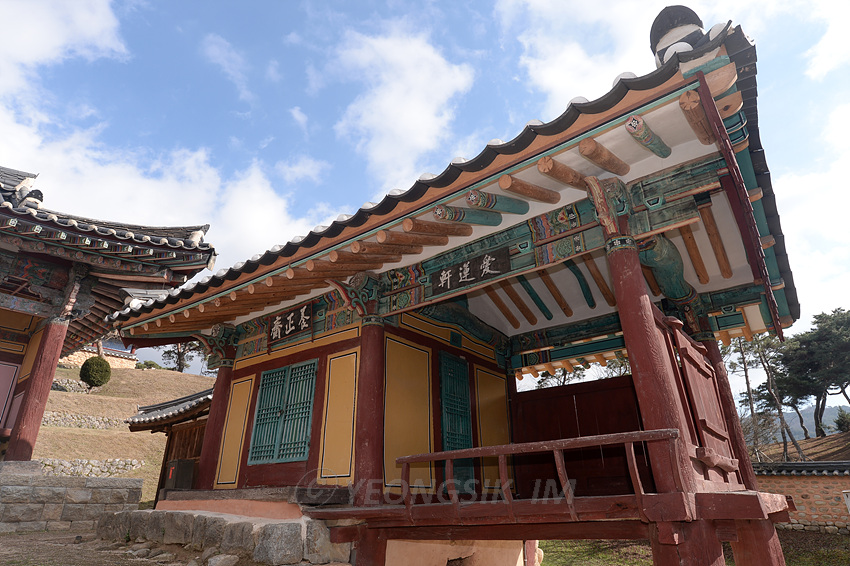
동재 Eastern dormitory
우생들이 거처하며 공부하던 곳으로 강당의 동쪽에 있어 ‘동재’라고 한다. 동재는 양정재라고도 하는데,이는 “역경에 나오는 ‘교육을 함으로써 사람을 바르게 기르는 것은 성인의 공덕이다.’라는 구절에서 따온 말이다.
동재는 서재와 같은 2칸의 건물로 1칸은 온돌방이며 나머지 1칸은 애련헌이라고 이름 붙인 누마루로 되어 있다. 정여창 선생은 송나라 때의 성리학자 주돈이의 애련실에 영향을 받아 매화와 연꽃을 사랑하여 누 이름을 애련헌과 영매헌이라고 지었다.
This dormitory used to house Confucian students enrolled in the school was, and is, called Dongjae (Eastern Dormitory) because it is located in the east of the main lecture hall. It has its own name Yangjeongjae ("Donnitoiy of Righteousness Nurturing") taken from a passage in The Book of Changes, an ancient Chinese book of divination. The building has two rooms one of which was furnished with traditional floor-heating system and the other with raised wooden floor. The wooden-floored room is named Aeryeonheon, or ”House of Lotus/ representing a wish to help students nurture the noble beauty of lotus flowers in their spirit. The names of the lofty wooden floored rooms of both dormitories, Aaeiyeonheon and Yeongmaeheon, were given by Jeong Yeo-chang (1450-1504) who was greatly influenced by "Ode to Lotus” ,a poetic work written by Zhou Dunyi (1017-1073), a renowned Neo-Confiician scholar of Northern Song.
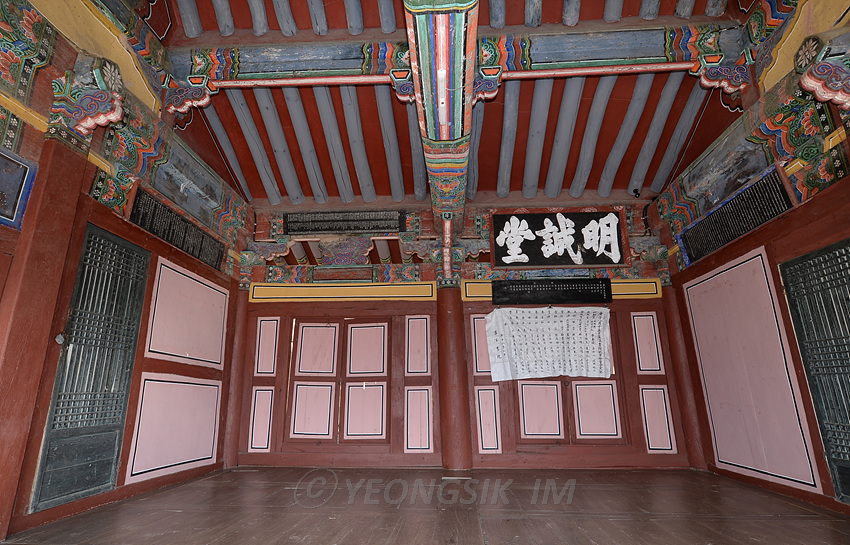
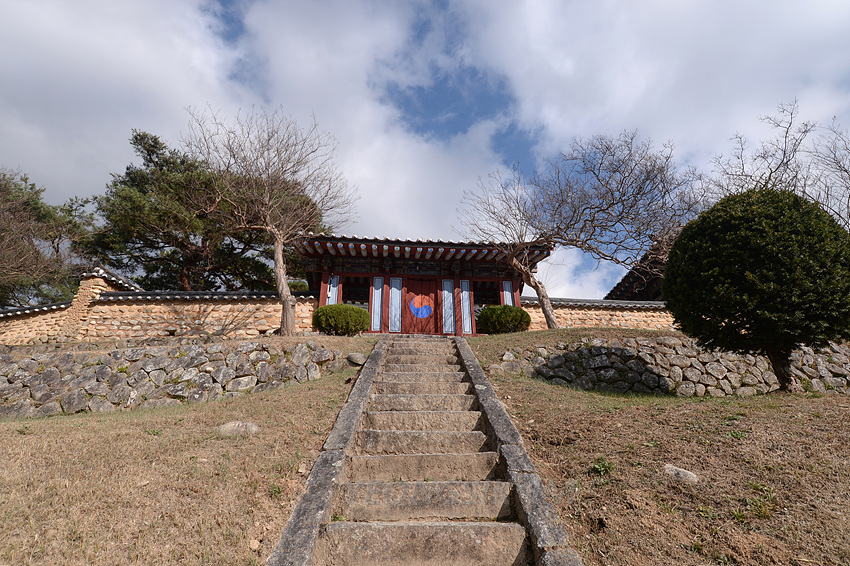
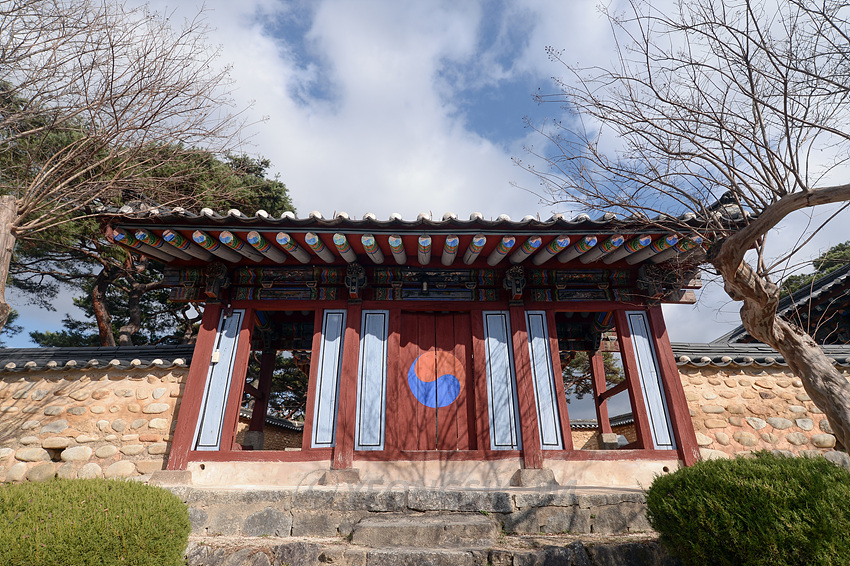
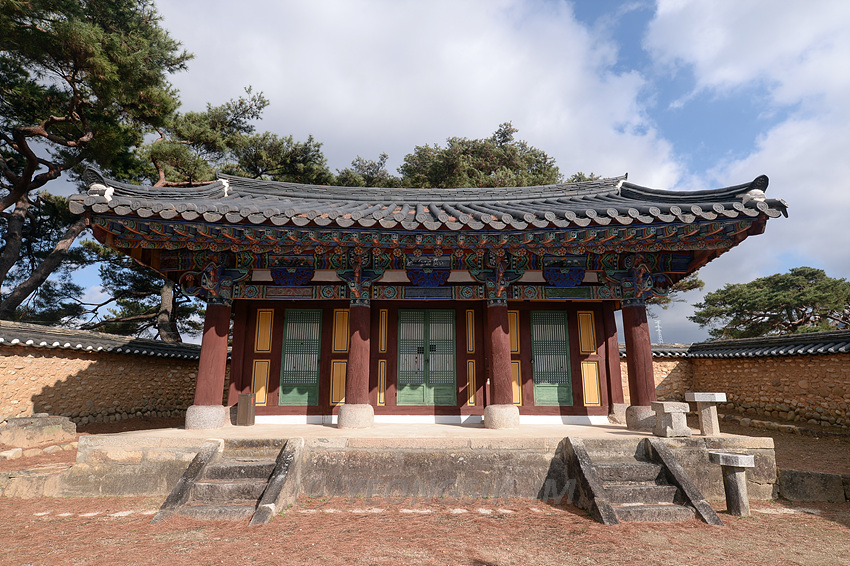
사당 Sadang Main Shrine Hall
서원은 조선시대의 사설 교육기관이자 선현들을 모시고 제향을 올리는 곳이다. 남계서원은 조선 초기 성리학자이며 동방 5현으로 불리는 일두 정여창 선생의 학문과 사상을 추모하기 위하여 1552년 개암 강익을 비롯한 지방 유생들이 건립하였다.
이 서원은 소수서원에 이어 전국에서 두 번째로 오래된 서원으로 1566년에 명종 임금에게서 하사받은 사액 서원이다. 출입문인 풍영루와 강당,동재,서재,경판고장판각,사당 등으로 구성되어 있다. 급한 경사지에 사당을 제일 높은 곳에 두고 출입문까지 일직선상으로 배치하였는데,이는 전학후묘의 배치 형식으로 우리나라에서는 처음이며,이후 각 지역에 건립되는 서원은 대부분 이러한 배치 형식을 따르게 되었다.
남계서원은 정유재란(1597년) 때 소실되었으나 1612년 현재 자리에 다시 세웠으며,흥선대원군의 서원 철폐령 때 헐지 않고 존속한 서원 중 하나이다.
Seowon, literally "house of letters", is a word referring to the private Confucian shrine-cademies established during the Joseon Period for the education of local Confucian followers and seasonal rites honoring Confucius and his disciples. Namgyeseowon was established in 1552 by a group of local Neo-onlucian scholars including Gang Ik (a.k.a. Gaeam) to honor the academic achievement of Jeong Yeo-chang (a.k.a. Ildu), a renowned Neo-Confucian scholar of early Joseon who was admired as one of the Five Wise Men of the East.
Namgyeseowon is the second oldest, following Sosuseowon, of all the institutions of its kind to appear in Joseon whose name plaque was bestowed by King Myeongjong in 1566. It consists of the Pungyeongnu Gate Pavilion, lecture hall, Dongjae and Seojae (dormitories), Gyeongpango or Jangpangak (libraries), and shrine. All the buildings are aligned in a straight line on a slope with the shrine placed at the innermost and highest point. The arrangement is known as the first case of the "school front and shrine back" layout, setting a model for all the Confucian slirine-academies of Joseon built after it. The academy was burnt down during Jeongyu Jaeran (Japanese Invasions in 1597). It then had a temporaiy shrine in Yeonhwasan Mountain in 1600, was moved to Nachon Village five years later, and finally restored in the current location in 1612. It is the only institution in Gyeongsangnam-do that remained open even after the edict that enforced closure of the shrine academies.







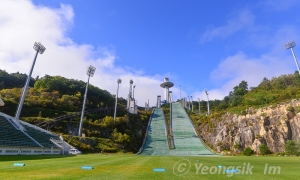
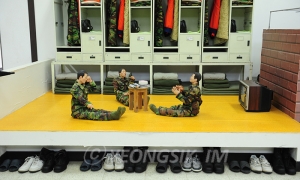
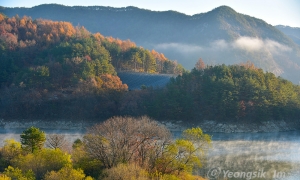
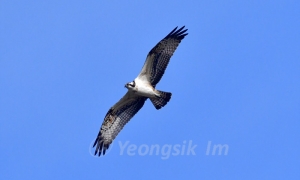

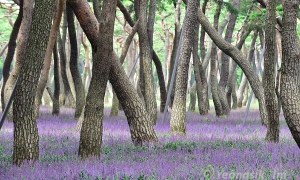


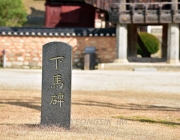 함양 남계서원 · 청계서원
함양 남계서원 · 청계서원


